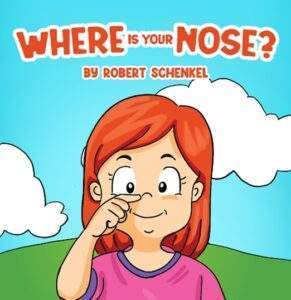Teaching preschoolers about the human body’s complexities may seem daunting, but with the right approach, it can be an incredibly rewarding experience. Are you thinking about how to explain anatomy to a child? In this blog, we’ll explore some invaluable insights and strategies for educators eager to simplify anatomical concepts for children in an engaging and understandable way. Let’s embark on this exciting journey of unraveling the mysteries of the human body for our little learners.
5 Tips on How to Explain Anatomy to a Child
When looking for ideas about how to explain anatomy to a child, always think from a child’s perspective. For these young learners, igniting curiosity is easy, but maintaining it throughout can be challenging. Therefore, look for tricks that can help keep a child engaged and fascinated while teaching them something new and fun.
1. Start with the Basics:
When introducing anatomy to preschoolers, make sure to start with the basics. Begin by focusing on the body parts that are most familiar to them – hands, feet, nose, ears, and eyes. Incorporate interactive activities like songs, games, and colorful visuals to make the learning experience fun and memorable.
For instance, you could use a popular children’s book encouraging them to touch their nose, ears, and other body parts as they sing along. This makes learning enjoyable and reinforces their understanding through a multisensory approach. “Where Is Your Nose?” by Robert Schenkel is a great resource, especially when planning a hands-on experience while keeping it simple.

“Where Is Your Nose?” is a great resource for children to learn about body parts
2. Utilize Age-Appropriate Language:
Choosing the right words is crucial when explaining anatomy to young children. Use language that is simple, clear, and age-appropriate. Avoid jargon or complex terminology that might confuse rather than enlighten.
Consider using storytelling as a method to explain different body parts. You can create relatable characters or use familiar animals to represent organs and systems. This captures the child’s imagination and makes the information more relatable and accessible.
3. Incorporate Visual Aids:
Children are visual learners, and incorporating visual aids can significantly enhance their understanding of anatomy. Utilize vibrant and engaging illustrations, diagrams, and even educational videos that showcase the human body in a way that is easy for them to comprehend.
For instance, you could use a simple diagram of the body and point to each part as you explain its function. Interactive apps or educational websites designed for young children can also be valuable resources to reinforce their learning. Moreover, fun and colorful illustrations, like the captivating visuals in “Where Is Your Nose?” also help children remember things easily.
4. Make it a Hands-On Experience:
Preschoolers love hands-on activities, so why not incorporate this into your anatomy lessons? Create simple and safe experiments or activities that allow children to explore and discover certain aspects of the human body on their own.
For example, you could use playdough to create basic representations of organs or body parts. This tactile experience makes learning enjoyable and reinforces their understanding through sensory input. Dancing and performing actions on rhymes related to body parts can also be an excellent activity for kinesthetic learners.
5. Use Analogies:
Analogies are powerful tools for simplifying complex concepts. When explaining anatomy to preschoolers, use familiar analogies to relate different body parts to everyday objects or activities. This helps bridge the gap between the abstract nature of anatomy and the child’s concrete understanding.
For instance, you could compare the heart to a pump that circulates blood like a water pump. Analogies create memorable connections that stick with children and make learning about the human body more relatable.

Keep tickling your students’ curiosity to keep them engaged
Order “Where Is Your Nose?” by Robert Schenkel Now!
Teaching anatomy to preschoolers is not just about conveying information; it’s about fostering curiosity and appreciation for the wonders of the human body. By starting with the basics, using age-appropriate language, incorporating visual aids, making it a hands-on experience, and employing analogies, educators can create a foundation for a lifelong interest in science and the human body.
As you embark on this educational journey with your young learners, remember to be patient, flexible, and, most importantly, have fun! The joy of discovery and learning is contagious, and by sharing that enthusiasm, you can inspire a new generation of budding scientists.
Ready to delve deeper into the world of anatomy with your preschoolers? Discover the perfect companion for your lessons in Robert Schenkel’s “Where Is Your Nose?” – a delightful children’s book that combines education with entertainment. Order your copy today and make learning about the human body a joyous adventure for your little ones!

